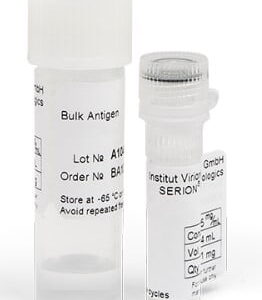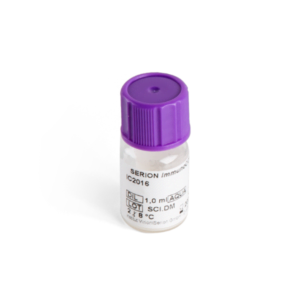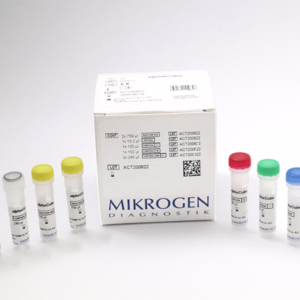| Weight | 1 lbs |
|---|---|
| Dimensions | 9 × 5 × 2 in |
| host | mouse |
| isotype | IgG1 |
| clonality | monoclonal |
| concentration | concentrate, predilute |
| applications | IHC |
| reactivity | human |
| available size | 0.1 mL, 0.5 mL, 1 mL concentrated, 7 mL prediluted |
mouse anti-Adenovirus monoclonal antibody (20-11 & 2-6) 6013
Price range: $160.00 through $528.00
Antibody summary
- Mouse monoclonal to Adenovirus
- Suitable for: Immunohistochemistry (formalin-fixed, paraffin-embedded tissues)
- Reacts with: Human
- Isotype:IgG1
- Control: Adenovirus infected tissue
- Visualization: Organisms
- 0.1, 0.5, 1.0 mL concentrated, 7 mL prediluted
mouse anti-Adenovirus monoclonal antibody 20&11 & 2&6 6013
| target relevance |
|---|
| Protein names Adenovirus |
| Structure Adenoviruses (members of the family Adenoviridae) are medium-sized (90-100 nm), nonenveloped (without an outer lipid bilayer) viruses with an icosahedral nucleocapsid containing a double-stranded DNA genome. Their name derives from their initial isolation from human adenoids in 1953. They have a broad range of vertebrate hosts; in humans, more than 50 distinct adenoviral serotypes have been found to cause a wide range of illnesses, from mild respiratory infections in young children (known as the common cold) to life-threatening multi-organ disease in people with a weakened immune system. |
| Biotechnology Direct and indirect detection methods are used for the diagnosis of Adenovirus infectons. Due to the variety of clinical symptoms, which may be caused by Adenoviruses, serological investigations have become important for the differential diagnosis of respiratory tract infections. |
Data
 |
| Human lung stained with anti-Adenovirus antibody using peroxidase-conjugate and DAB chromogen. Note the nuclear staining of adenovirus infected pneumocytes . |
Publications
| pmid | title | authors | citation |
|---|---|---|---|
| We haven't added any publications to our database yet. | |||
Protocols
| relevant to this product |
|---|
| IHC |
Documents
| # | SDS | Certificate | |
|---|---|---|---|
| Please enter your product and batch number here to retrieve product datasheet, SDS, and QC information. | |||
Only logged in customers who have purchased this product may leave a review.




Reviews
There are no reviews yet.